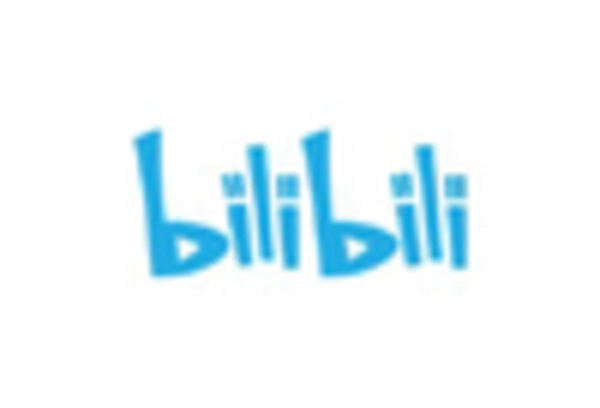Rising Demand for Live Events
The live streaming market in Europe is witnessing a notable increase in demand for live events, including concerts, sports, and conferences. This trend is driven by a growing audience preference for real-time experiences that foster a sense of community and engagement. In 2025, it is estimated that the revenue generated from live streaming events in Europe will exceed €2 billion, reflecting a robust market potential. The ability to reach a wider audience through digital platforms allows event organizers to monetize their content effectively. Additionally, the integration of interactive features, such as live chats and polls, enhances viewer participation, further solidifying the importance of live events in the live streaming market.
Increased Focus on Content Diversity
The live streaming market in Europe is characterized by an increased focus on content diversity, catering to a wide range of interests and demographics. This diversification is essential for attracting and retaining viewers in a competitive landscape. Platforms are investing in original programming and localized content to appeal to various cultural preferences. Data indicates that platforms offering diverse content see a 20% higher viewer retention rate compared to those with limited offerings. This trend not only enhances user engagement but also opens new revenue streams through targeted advertising and partnerships. Consequently, the emphasis on content diversity is a pivotal driver in the live streaming market.
Regulatory Developments and Compliance
The live streaming market in Europe is significantly influenced by regulatory developments and compliance requirements. As governments implement stricter regulations regarding content distribution and data protection, streaming platforms must adapt to these changes to operate legally. The General Data Protection Regulation (GDPR) has set a precedent for data privacy, impacting how companies handle user information. Compliance with such regulations is crucial for maintaining consumer trust and avoiding hefty fines. It is estimated that non-compliance could cost companies up to €20 million or 4% of their annual revenue, whichever is higher. Thus, navigating the regulatory landscape is a critical driver for the live streaming market, shaping operational strategies and market entry.
Shift Towards Subscription-Based Models
The live streaming market in Europe is increasingly shifting towards subscription-based models, which offer consumers exclusive content and ad-free experiences. This trend is indicative of changing consumer preferences, as viewers are willing to pay for high-quality content that aligns with their interests. Recent statistics suggest that subscription revenues in the live streaming market are expected to grow by 15% annually, reaching approximately €1.5 billion by 2026. This growth is attributed to the rise of niche platforms catering to specific audiences, such as gaming and educational content. As competition intensifies, providers are likely to innovate their offerings to retain subscribers, thereby influencing the overall market dynamics.
Technological Advancements in Streaming
The live streaming market in Europe is experiencing a surge due to rapid technological advancements. Innovations in internet infrastructure, such as the rollout of 5G networks, enhance streaming quality and reduce latency. This improvement allows for seamless high-definition content delivery, which is crucial for user engagement. Furthermore, the adoption of advanced encoding technologies enables platforms to optimize bandwidth usage, making live streaming more accessible. According to recent data, the number of 5G subscriptions in Europe is projected to reach 300 million by 2025, significantly impacting the live streaming market. As a result, content creators and businesses are increasingly leveraging these technologies to enhance viewer experiences, thereby driving market growth.

















Leave a Comment